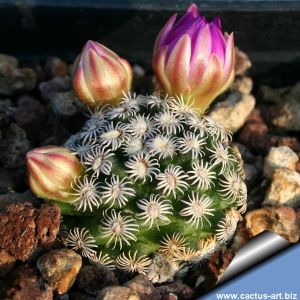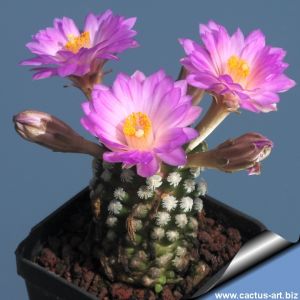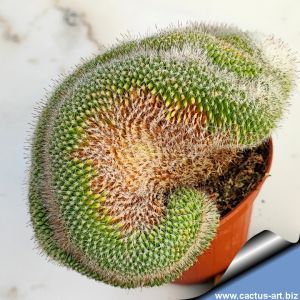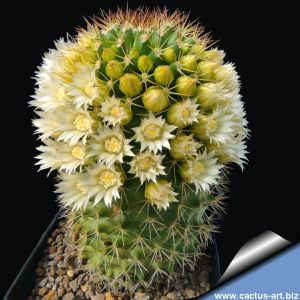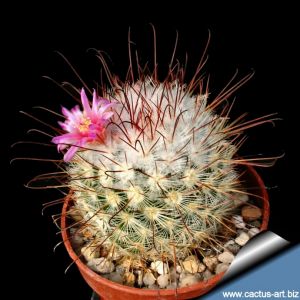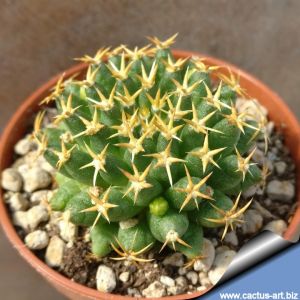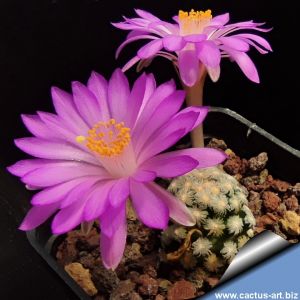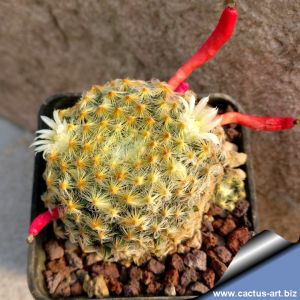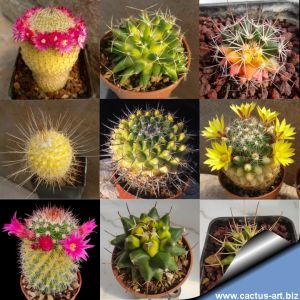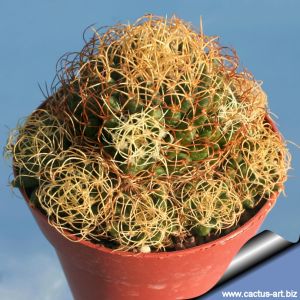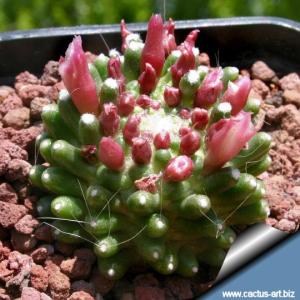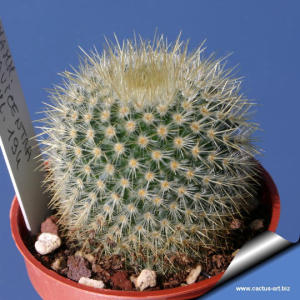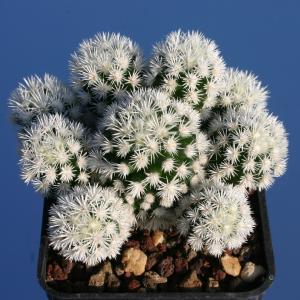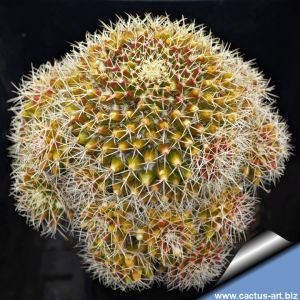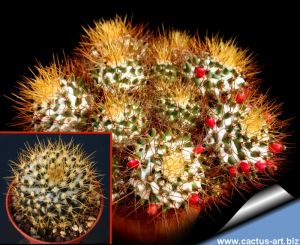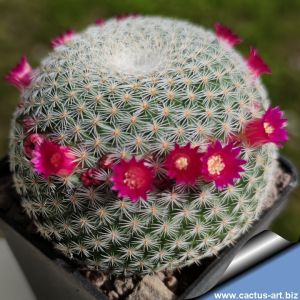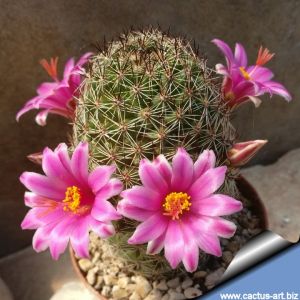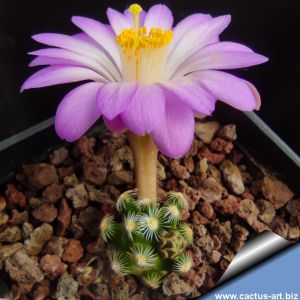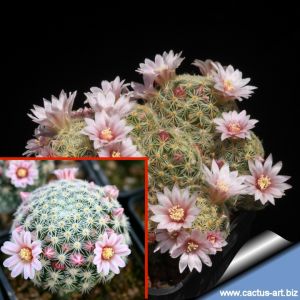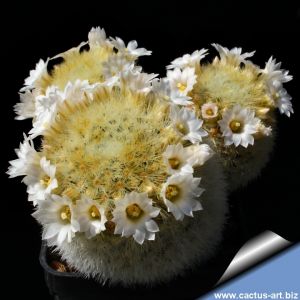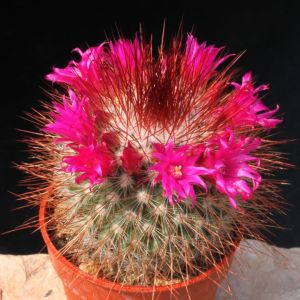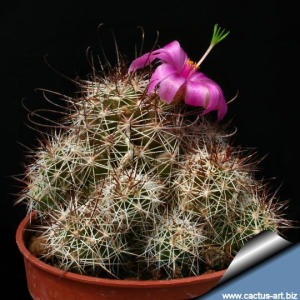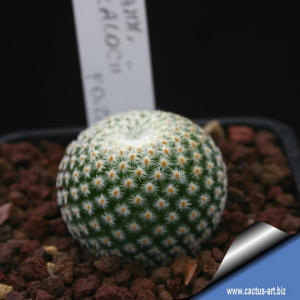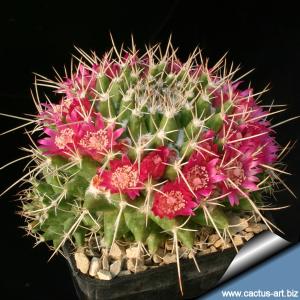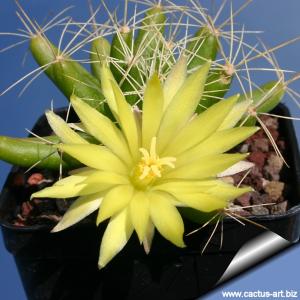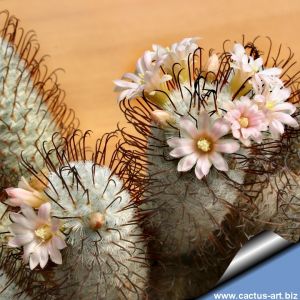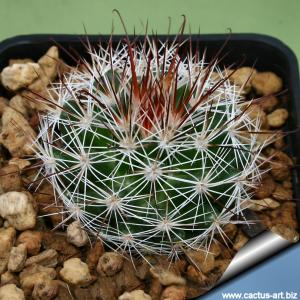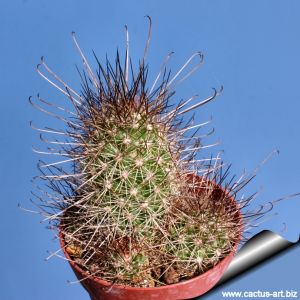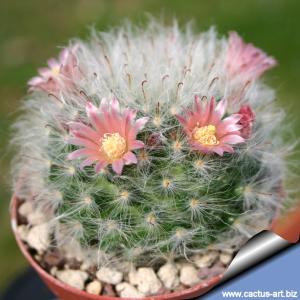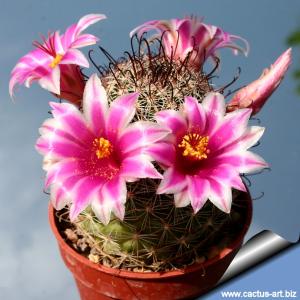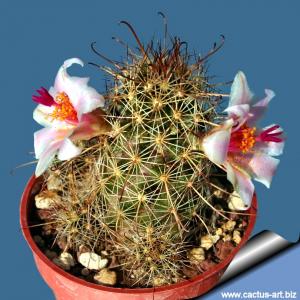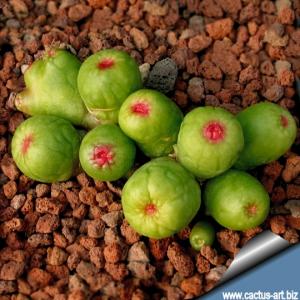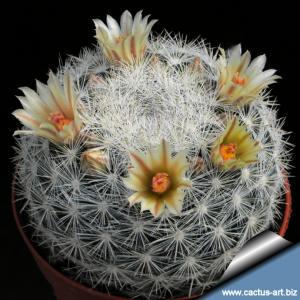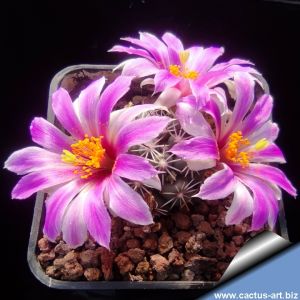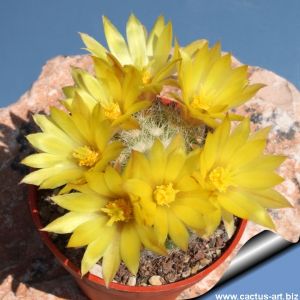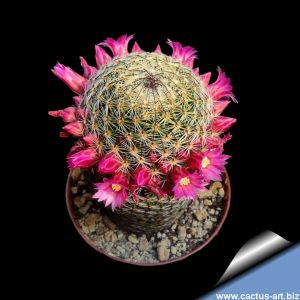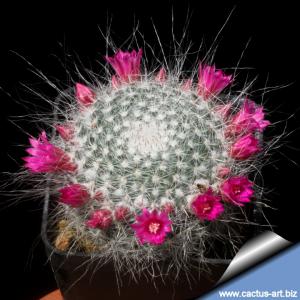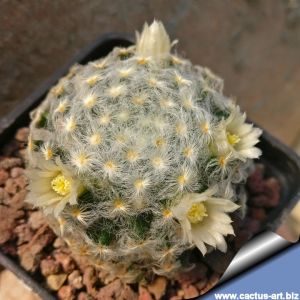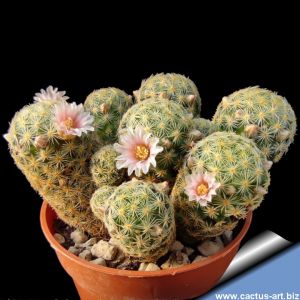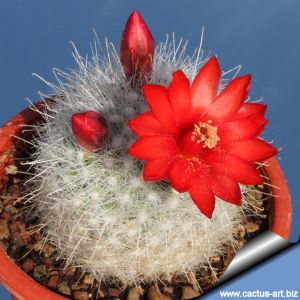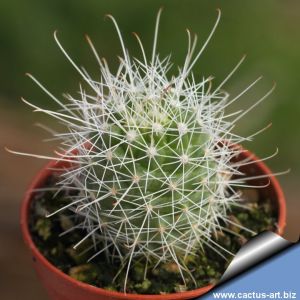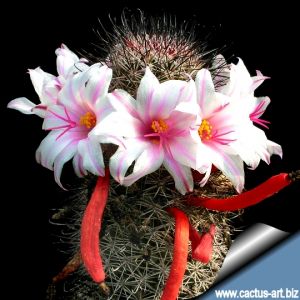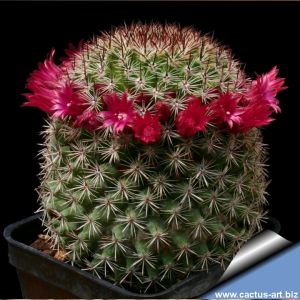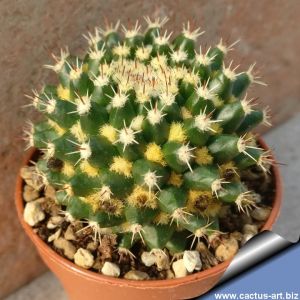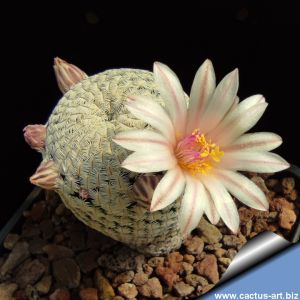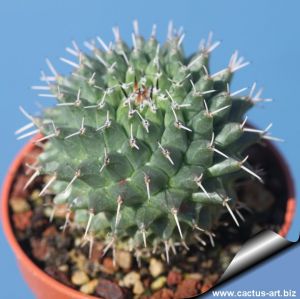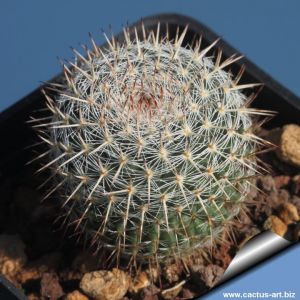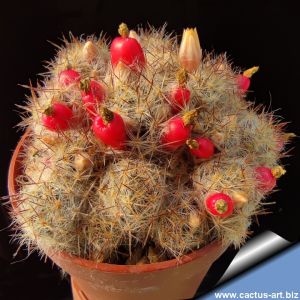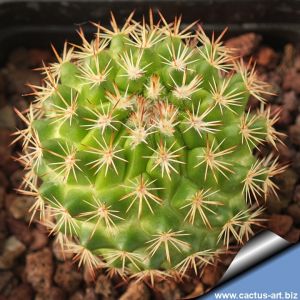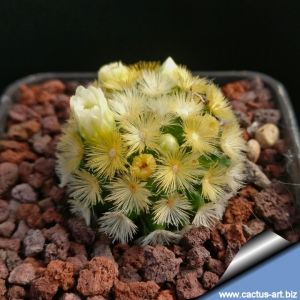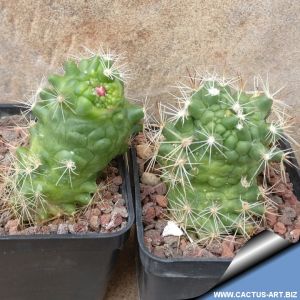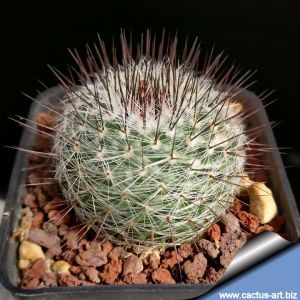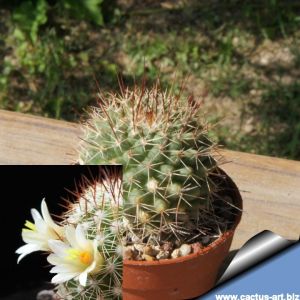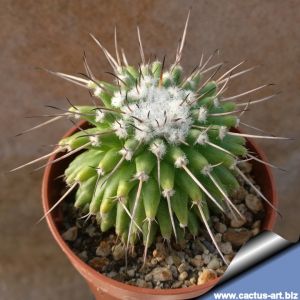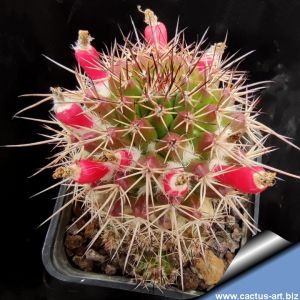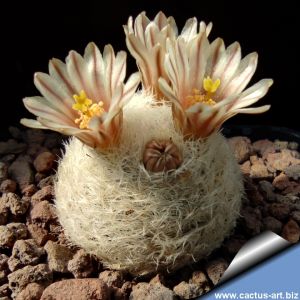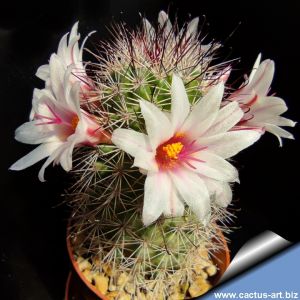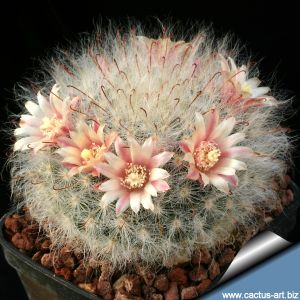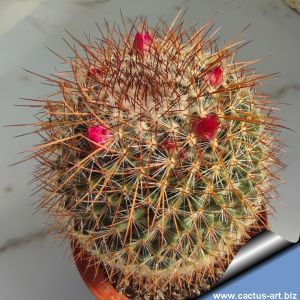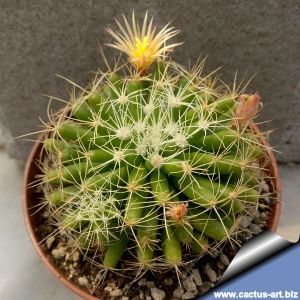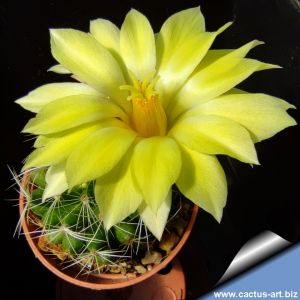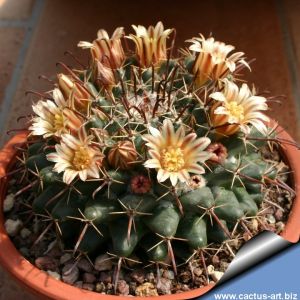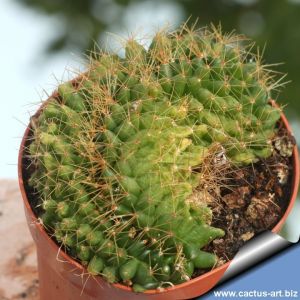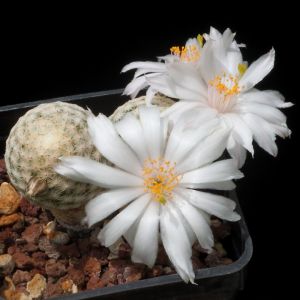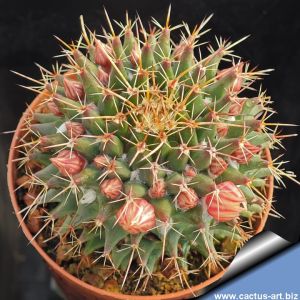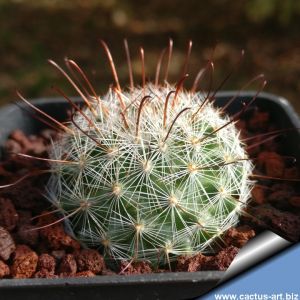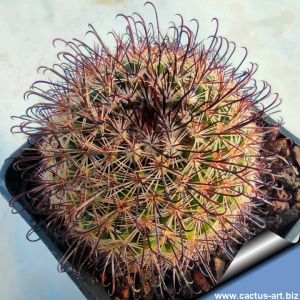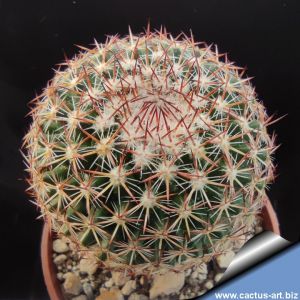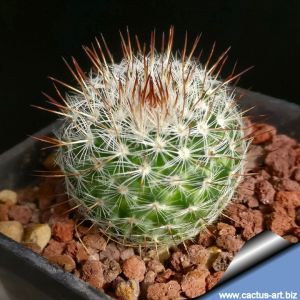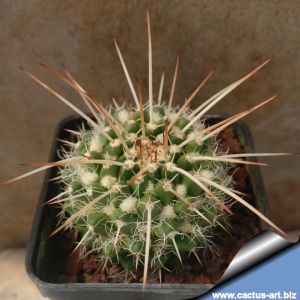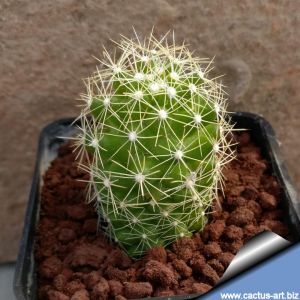-
1
With the uniqueness of the spine patterns this tiny plant is a real gem and one of the most sought-after and distinctive species of Mammillaria. Diameter 1,5-2 cm flowering size!
-
2
Mammillaria theresae is one of the most sought-after and very distinctive species of Mammillaria, this little species is immediately recognisable by its spination even when not in flower. Blooms very large magenta-pink.
-
3
# # # SPECIAL PLANT # # # (Selected specimen)
Lenght 15 cm. H 9cm.
-
4
-
5
A stunning clump-forming cactus, growing in bowl-like mounds. Its translucent white radial spines contrast with hooked reddish-brown centrals. Annual blooms form perfect rings of carmine-pink flowers.
-
6
-
7
Dwarf variety with feathery, tight-clinging spines. Oversized crocus-shaped blooms in vivid violet-pink. Breathtakingly beautiful!
-
8
-
9
Seed plants selected for the variegated body. Very beautiful and strange. Variables.
-
10
A.k.a. Bird's nest Mammillaria, this is a wonderful old favourite cultivar with curly golden-yellow spines. A plant soon forming many heads. The new growth is very attractive, the long, entwining yellowish spines soon form a mat. A real beauty.
-
11
It is a well known cultivar characterized by very reduced or absent spines, free branching, and with small pink flowers.
-
12
-
13
"Arizona Snowcap" shows an odd thickening and shortening of the spines, resulting in a most attractive, unusual candid white looking plants.
-
14
Initially solitary, the stem may branch or divide dichotomously as it matures. Spines spreading, straight, whitish with red-brown tips. Axils are woolly with white bristles. yellowish-white with reddish-browni tips.
-
15
Mammillaria nivosa is one of the wooliest mams with beautiful golden-yellow-spines.
After producing several rounds of blooms earlier in the year it will give strikingly bright red fruit.
This is a really beautiful cactus.
-
16
After several years the old plants divide at their apex, ramifying dichotomously (to form two or more distinct joints) and in 10-15 years they forms small colony. It is a pleasing sight, even in the depths of winter.
-
17
Now often considered a synonym of Mammillaria sheldonii, to which it shows only modest differences: absence of central spines and larger flowers with a characteristic distinctive orange pistil.
-
18
Rare species, prized for its unusually large, crocus-like blooms - among the showiest in the genus. Simply stunning!
-
19
Small clustering species with fine, feathery, flexible, somewhat pectinated, white to almost orange spines. Flowers with pink midstripes at the end of winter in February-March.
-
20
M. schiedeana subs. giselae f. albiflora is a rare cultivar that forms a graceful yellowish-white puff with eventual offsets and nice pure white flowers. It could be a cross between M. giselae and M. carmenae. it is one of the most fascinating cultivars.
-
21
Robust stems, later cylindrical, with reddish spination and pink flowers! The spines increase their red color and density as the plant ages. Super plants.
-
22
Flowers wide purplish pink ,style pink with nice green stigma-lobes
Bloomis in April and the flowers remain open for several days (at least three)
-
23
Mammillaria tlalocii is an attractive and rewarding cactus with dense white spines
The slow growth rate make it one of the most sought-after species.
-
24
Compact, rather low body, fast growing, many purple-pink flowers. Forms large emispheric mounds in time.
-
25
The tubercles are very pronounced, long, soft and flaccid.
The lemon yellow flowers are very large for this genus (6 cm in diameter ) and are produced in abundance in summer.
-
26
Similar to the related M. bombycina, it differs in its darker centrals and denser, pectinately arranged radials that completely conceal the epidermis, and in its paler pink flowers. H approx 2 cm.
-
27
Mammillaria marcosi is a beautiful plant with white radial spines and dark reddish-brown centrals. It will slowly forms irregular clumps with dense spination. It may grow up to 25 cm in diameter, with up to 30 heads.
-
28
Clumping cactus, irregularly forming clusters up to 1 m across or more. Flowers large, spectacular, zygomorphic bright scarlet. Not the most easy to grow but worth trying. Be careful with too much water and give it good ventilation. Strong spination.
-
29
M. bocasana var multilanata has round soft stems with an extreme abundance of white woolly hairs and short hooked central spines. The flowers are numerous, large and pink.
-
30
Flowers are very showy, light purplish-pink with a pinkish brown midstripe and paler margins, about 20-30 mm in diameter. The fruit are club shaped, pale scarlet 25-30 mm long.
-
31
The particularity of this species is that every branch will form an independent root system, the connections of which to the rest of clone are ephemeral, resulting in dense clumps of independently rooted stems.
-
32
Fred is one of the most famous and strange monstrous cactus cultivar that forms very rubbery and squishy green and pink glob. It is a mutation that formed on a normal M. bocasana.
-
33
Mammilloydia candida called 'Snowball' is a choice cactus with a so dense snowy white, spination, that its body appears hidden by spines. Mammilloydia are clearly related to the genus Mammillaria, but it is usually recognized as a segregate genera.
-
34
Small-sized, with a body ranging from grey-white to bluish-green, hooked spines, and striking pink flowers.
-
35
Soft whitish spines, rather big yellow flowers, lemon scented!
-
36
-
37
Classic species – Low, globular plant covered in white woolly hairs from the axils. Adorned with charming pink flowers. A collector's favorite.
-
38
A tactile wonder with feathery white spines so dense they form snowy angel wings. The cream-colored flowers appear as surprise jewels nestled in the plush spination - a masterclass in nature's softest paradox within the spiny cactus family.
-
39
-
40
Clumping plants with soft grey-green skin and prominent, rounded tubercles. Showy pink flowers crown the plant's top.
-
41
Also known as Mamillopsis senilis it is a pretty cactus species looking like a cotton ball with small but sharp, glistening hooked white spines and totally covered in long radials. Flower large and red! Seems to flower more easily if kept cold in winter.
-
42
-
43
-
44
-
45
-
46
Mammillaria pectinifera, previously known as Solisia pectinata, is a small cactus. The spines are pectinate (comb-like), flattened against the body, fine, numerous, white, 1.5 -2 mm long. Flower white to pink with darker mid-strip.
-
47
-
48
White wooly areoles, white-pink flowers.
-
49
Produces a profusion of red tasty berries without any need of pollination (self-fertile). It will form soon dense mounds with dozen of small stems.
-
50
-
51
Tight yellow feathery spines.
-
52
-
53
-
54
Mammillaria multidigitata is endemic to San Pedro Nolasco Island in Mexico, where it growson steep slopes. From spring to early summer it sprouts white to cream colored flowers with yellow-green stigma and orange pollen.
-
55
Mammillaria sempervivi f. montruosa is distinguished by the single long central thorn in each areole. It clumps flat with ground. The white wool between the areoles makes this species a pleasure to look at and grow.
-
56
ammillaria collinsii features white flowers with pink mid-veins, a central spine, and 7 radial spines. Stems grow to 16 cm tall and 9 cm wide, branching from the base to form clumps up to 40 cm in diameter.
-
57
Mammillaria lasiacantha is a tiny, usually unbranched or slowly clustering cactus, deep-seated in substrate and inconspicuous. Adults of M. lasiacantha usually have glabrous spines, but some plants may retain plumose spines at maturity.
-
58
-
59
-
60
Central spines amber-yellow, dark orange or reddish-brown. Radial spines white.
-
61
-
62
Huge bright yellow flowers.
-
63
Dark blue-green stem growing very flattened. Features 1 hooked central spine (pinkish-grey to purplish-brown) with dark tips, up to 10 mm long. Funnel-shaped flowers creamy-white or pinkish with brownish mid-veins.
-
64
-
65
-
66
It thrives alongside Ferocactus echidne REP1139A and Mammillaria priessnitzii REP1134 in its natural environment.
-
67
-
68
-
69
-
70
-
71
Mammillaria nejapensis is very variable, especially for the length of the spines, that greatly depends on sun exposure and age of the plant. This species forms large colonies by dichotomous division.
-
72

